Compact Unit
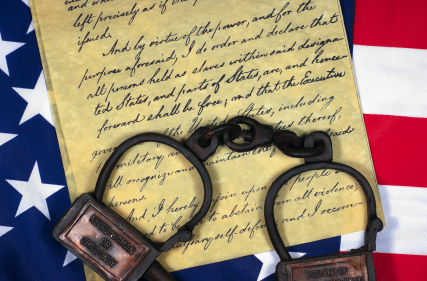
EMANCIPATION PROCLAMATION DAY AND JUNETEENTH
Sunday, January 6, 2013
(See the special video below featuring Marcus Garvey.)
Writer for This Unit: J. Kameron Carter, Lectionary Team Commentator
The unit you are viewing, Emancipation Day and Juneteenth, is a compact unit. This means that it does not have a supporting cultural resource unit and worship unit. Instead, to enliven the imagination of preachers and teachers, we have provided scriptural text(s) for this moment on the calendar along with a sermonic outline, suggested links, books, articles, songs, and videos. For additional information, see Emancipation Day and Juneteenth in the Lectionary archives for 2008–2012.
I. Description of the Liturgical Moment
Today’s lectionary moment has two deeply intertwined parts: Emancipation Day and Juneteenth. The former, Emancipation Day, is in many African American church traditions a day set apart. It is a holy day meant for reflecting upon the events that transpired leading up to and including the legal freeing of the slaves in the United States of America. Against all manors of existential and political obstacles, the sixteenth President of the United States, Abraham Lincoln, issued a proclamation of emancipation on September 22, 1862 in the ten states not under Union control, and in the next 100 days Lincoln prepared the army and the country for the legal enforcement of emancipation on January 1, 1863. Eventually some three million slaves had been emancipated and entered upon the treacherous waters of citizenship—also known as “freedom”—as post-slave subjects in the United States. During the same 100-day period that Lincoln was preparing the country for emancipation, the Democrats (the party opposed to emancipation at the time) rallied voters in the off-year elections using fear-mongering tactics. They sought to garner votes by warning an anxious public of what America it would become with freed slaves roaming the streets and living in the neighborhoods of not just the South but the North as well.
Emancipation Day is a day of remembrance and is fittingly placed in the African American Lectionary on January 1, News Year’s Day, for Emancipation Day was the day of rebirth. Somewhat like baptism, it was a day of being born out of slave existence into the condition of citizenship and into a project of freedom. And we must bear in mind that citizenship and freedom is both a now and a not-yet. It is a “now” in the sense that slaves were in the eyes of the law free on January 1, 1863, but also it was on this day that they joined forces with the North and entered upon the struggle and the work of freedom and citizenship, a struggle that took the initial form of a civil war. And we gain insight into the sense in which freedom is also “not yet.” Freedom is not complete. It is an ongoing work. Freedom is a vision that calls for faithful struggle for its full realization.
And this brings us to the second part of our liturgical moment: Juneteenth. Juneteenth is the oldest-known celebration of the freeing of slaves in the United States and dates back to June 14, 1865. This is the day when Union soldiers reached the state of Texas with news that the Civil War was finally over. They were there to enforce the decree of Emancipation that the slaves were free, which had been legally put in place two-and-a-half years earlier on January 1, 1863. Freedom was delayed, but ultimately not denied.
I’m taken with the Rev. Dr. Brad Braxton’s interpretation of the significance of “Juneteenth” as a word. In his 2008 lectionary commentary for Emancipation Day and Juneteenth, he says:In other words, Juneteenth represents new birth out of the chains of captivity and it represented a kind of speech, a Pentecostal speech and sound of freedom.
It is also significant that Juneteenth invites us to reflect upon the fact that during the two-and-a-half-year period between Emancipation Day and Juneteenth, there were still some people of color, people of African descent in the United States, who were still in bondage. They were still functioning as slaves, though legally they were free. Juneteenth, then, was for them a delayed celebration, a delayed enforcement of freedom. It represented a lagging liberation. This time lag of liberation is a metaphor of what it means to exist in the in-between of freedom, in freedom’s now-but-not-yet. In other words, Juneteenth points to the fact that liberation is not a one-time event. It is an ongoing project beckoning us to write the vision of freedom and issue renewed proclamations of “freedom now.” Juneteenth signifies the fact that freedom and liberation is both behind and ahead of us. To use the language of theology, freedom is eschatological, for in the gap between the now and the not-yet is vision or what may be called “freedom dreams.” Emancipation and Juneteenth point to freedom’s ongoing possibilities. But also, together they point to faithful struggle, or the struggle of faithfulness, to further the task of freedom and liberation against the illegitimate shackles of bondage—be they poverty, violence (domestic and otherwise) in our communities, practices of exclusion in our churches and society, or whatever holds us in bondage.
II. Emancipation Proclamation Day and Juneteenth: Sermonic Outline
A. Sermonic Focus Text: Habakkuk 2:2-4 (New Revised Standard Version)
(v. 2) Then the Lord answered me and said: Write the vision; make it plain on tablets, so that a runner may read it. (v. 3) For there is still a vision for the appointed time; it speaks of the end, and does not lie. If it seems to tarry, wait for it; it will surely come, it will not delay. (v. 4) Look at the proud! Their spirit is not right in them, but the righteous live by their faith.
B. Possible Titles
i. The Just God
ii. Write the Vision—Live the Vision
iii. Vision of the Faithful
iv. God’s Justice in an Unjust World
C. Point of Exegetical Inquiry
Central to Habakkuk’s prophecy is its structure in three parts that coordinate with its three chapters. In the first part (chapter 1), we are allowed to eavesdrop on a conversation between the prophet and God. Against the backdrop of a rising tide of idolatry under the reign of King Jehoiakim who defied God’s law (torah), Habakkuk complains before God. He asks in effect, “How long with the injustice and idolatry among the people of Israel continue?” God responds in effect by says, “Not long.” The Babylonians were going to be God’s instrument of judgment on the people of Israel. But this only raised more questions for Habakkuk about the justice of doing this. How could the people of God survive apart from their land? How could they survive in exile, scattered among the unjust nations?
God’s response to this in the second part (chapter 2) forms the core of the message of Habakkuk’s prophecy (2:2-4) and serves to focus our exegetical inquiry and sermonic energy for Emancipation Proclamation Day and Juneteenth. God responds to Habakkuk by giving him a vision and promise to make it through the hard times that lay ahead for the people of Israel. On the one hand, the vision is about the justice of God. It is about God’s commitment to restore justice according to God’s own vision of justice in which God is the rule of justice. On the other hand, the vision that Habakkuk is told to write concerns the faithfulness of God to God’s people in the midst of the hard times and the unjust times that the people of God find themselves in during their exile. The promise of God is that while destruction is all around, there will be survival. The justice of God, which is God’s faithfulness, will uphold the people of God. Those who live by faith in God, not in themselves, will through the difficult times, in fact, live.
The final part (chapter 3) of Habakkuk’s prophecy is a psalm or a song of celebration of the vision of God. Habakkuk celebrates because the vision of God’s justice that he has received is a vision of hope and faith. Indeed, the vision of the justice and righteousness of God is a vision of the love of God.
III. Introduction
Today we celebrate two venerable events in the lives and history of African Americans, events that yet speak to us as we enter into the new year of 2013. They are Emancipation Proclamation Day and Juneteenth.
The former event, Emancipation Proclamation Day, is that set-apart or holy day in which we remember and commemorate the legal proclamation that freed our foremothers and forefathers from slavery in the United States. After some 250 years or so of slavery, on January 1, 1863, a change occurred. “Freedom dreams,” if I can take a phrase from the historian Robin D.G. Kelley, started to become a freedom reality.
Now quite often we stop with the story of Emancipation. We stop with the story of Abraham Lincoln’s proclamation. But in fact, there’s more to the story, which is why we are celebrating and commemorating today another important event: Juneteenth.
What is “Juneteenth”? Juneteenth is the oldest-known celebration of the freeing of slaves in the United States and dates back to June 14, 1865. Juneteenth is the day when Union soldiers reached the state of Texas with the good news that the Civil War was finally over. The soldiers showed up in Texas to enforce the new law of emancipation, the law that the slaves were now free. And so then in answer to the question, What is Juneteenth?, we can respond that Juneteenth is a day of delayed celebration and enforcement of a freedom that had in fact already been in place for over two years. In other words, Juneteenth points to the fact that liberation and freedom, while already in effect and while already a reality, nevertheless remain a project. It is a vision that still needs to be carried out. Juneteenth reminds us that work of emancipation is always ahead of us and that there is always more freedom to be realized. In other words, liberation and freedom and God’s justice are both “now” and at the same “not-yet-finished,” and that in the gap between “the now” and “the-not-yet-finished” is vision and the work of being faithful.
This is precisely the message spoken to by God to the prophet Habakkuk in Habakkuk 2:2-4. In chapter 1 the prophet complains to God, wondering aloud where God is in the midst of his people’s devastation. They are being invaded by enemy nations, the Babylonians. The prophet says in chapter 1 (5a): “Look at the nations, and see! Be astonished! Be astounded!” Will judgment come? Will God liberate? Will freedom be restored? Will justice be had? The prophet asks God, in a voice of complaint, Will we, God’s people, continue to undergo ravishment and destruction “without mercy” (1:17)? I want to suggest to you today that these are not just Habakkuk’s questions. They are our questions too. As black and brown folks suffer disproportionately the effects of economic and social devastation, we too ask, “Is there any relief coming?” If the country has been struggling to come out of a recession, then black and brown folks have been struggling to come out of a depression. In other words, we remain caught between liberation and its full realization, between Emancipation and Juneteenth.
And yet, between an incomplete freedom and the search for freedom’s “more than,” the text tells us that God responds to the prophet’s undeniable description of his times by giving him a freedom dream. God gives Habakkuk a vision to sustain him through the current condition of exile and through the brokenness and pain all around him. God gives him a vision that allows him to live through in the midst of the devastation, to bring life into the devastation, the brokenness all around him. God gives him a vision to live by faith.
IV. Moves/Points
Move/Point One – The Vision of God’s Justice
Vision is not to be underestimated. Without vision, people languish and perish. And yet it is so easy to become blinded by the difficulty and devastation that surrounds us and even at times invades our lives. The challenge before us in the midst of overwhelming difficulty and against all odds is whether we will allow God to take us to a place where vision and sight can be restored—where a vision of God’s justice opens before us. This is why God calls us to bear, proclaim, and announce the vision of God and God’s justice in the very places of devastation, pain, and brokenness in which we find ourselves.
a. God’s word of hope, freedom, and justice comes to us in moments of devastation. It is the word that God has not abandoned those whom our world has abandoned. This is God’s vision of justice.
b. God’s vision of justice is a word that speaks to us today.
c. But God’s vision of justice is not just a stationary word for the present time. It’s a word that we “run” into the future, reaching younger and future generations. It says that God will not abandon Generation X, Y, or Z either.
Move/Point Two – The Certainty of God’s Justice
a. God’s justice is not like our justice. Our justice can falter; God’s does not. Our justice can discriminate; God’s does not. Our justice can exclude; God’s does not. Our justice can fail; God’s does not. This is because God’s justice is unique in character.
b. God’s justice may seem to be delayed, but it ultimately cannot be denied. It waits for “an appointed time.” Though obstacles may seem to get in the way of the vision, in the way of God’s purposes being fulfilled, resistance to God’s justice is futile. And because of this, the challenge before us is to keep on running with the message of justice.
c. God’s vision of justice is certain and sure to come. It is sure to come because God both gives the vision of justice and is the justice that is coming. This is why the Hebrew translators of the Old Testament into Greek (the Septuagint) translates “if the vision should tarry, wait for it” as “if he (the Christ, the messiah) tarry, wait for him.” In other words, for Christians Jesus the messiah, Jesus the Christ, guarantees and secures God’s vision of justice. He is God’s justice and the one who makes us just.
Move/Point Three –Trusting in the God of Justice
a. We are the justified by God. Our justice or righteousness does not come from us.
b. We steadfastly trust in God due to the the fact that God has not abandoned us.
c. We live by trusting in God, and this trusting in God is why we work for God’s justice in the world.
V. Celebration
How do we survive the density of the dark nights of difficulty and despondency? How do we make it when we find ourselves positioned between blessing and what feels sometimes like a curse? How do we press on when caught between justice delayed and justice seemingly denied?
Can we press on, and how do we press on, when we know that the cattle on a thousand hills, says the Psalmist, belongs to God and yet—and yet—we’ve just received the dreaded pink slip, or the notice that we’re upside down on a mortgage and stuck in a home we can’t get out of, or worse still when we’ve just gotten an eviction notice? In essence, how do we hold on and press on and struggle on and strive on when we’re between Emancipation and Juneteenth?
Well, God speaks a word to us as we stand upon our watch and listen to see what the word of the Lord will be in response to our woeful circumstances.
God shows up in the darkness and grants us a new glimpse of God’s glory, a new vision of God’s justice. We’re allowed to see that God will never leave us nor forsake us. We’re allowed to see that God has not abandoned us, and because God has not abandoned us we need not abandon each other.
We’re granted the insight, the vision to see that God rejuvenates us in our faith in the Just God. And then the Holy Spirit gives us a Pentecostal dose of new energy—energy to be faithful, energy to work for justice, energy to be heralds and messengers of a Juneteenth word of freedom and deliverance to others in their pain, brokenness, and hopelessness. For even in our distress we’ve been given the vision to see that God has not abandoned us and that we are not alone. As the songwriter said:
I’ve seen the lightning flashing and heard the thunder roll,
I’ve felt sin’s breakers dashing, Trying to conquer my soul;
I’ve heard the voice of Jesus telling me still to fight on:
He promised never to leave me, never to leave me alone.1
Thank you, God, for never leaving us. Thank you, God, that in your grace and mercy no one is left behind. God, this is your vision of justice, because you are the Just God and we, all of us, are your justified people.
VI. Sights and Sounds in This Passage
| Sights: | A person writing; tablets; a runner; righteous people; people filled with hubris; people waiting for a word from the Lord; |
| Sounds: | The Lord speaking; the sound of a writing instrument on a tablet; and a runner running along a road. |
VIII. Songs to Accompany This Sermon
A. Well-known Song(s)
- Lift Every Voice and Sing. Traditional
- Wade in the Water. By James W. Alexander and Sam Cooke
- Chain Breaker. By Deitrick Haddon
- Victory Is Mine. By Dorothy Norwood and Alvin Darling
B. Modern Song(s) (Written between 2005–2012)
- One More Sunny Day. By Donald Lawrence
- Freedom Song. By Mandisa, Sam Mizell, and Matthew West
- Fly Like a Bird. By Mariah Carey and James “Big Jim” Wright
C. Spiritual(s) and Hymn(s)
- Faith of Our Fathers. By Frederick William Faber. Tune by Henri Frederick Hemy
- Freedom Afterwhile. By Michael L. Charles
- He Brought Me Out. By Henry J. Zelly. Tune by Henry L. Gilmour
D. Liturgical Dance Music
- Freedom. By Eddie James
- Free. By J. Drew Sheard and Kierra “Kiki” Sheard
E. Song(s) for the Period of Prayer
- I’m Free. By Percy Bady
- Dear God. By Smokie Norful
F. Sermonic Selection(s)
- Follow the Drinking Gourd. Traditional
- Oh Freedom. By Harry Belafonte, Gene Corman, and Milton Okun
G. Benediction Song(s)
- Rain on Us. By John P. Kee
- How Deeply I Need You. By Daryl Evans
IX. Videos, Audio, and/or Interactive Media
- “Junteenth: A Celebration of Freedom” by The Texas Institute for the Preservation of History and Culture.
Part one:
http://www.youtube.com/watch?v=fkI5ricZGLQ accessed 16 October 2012
Part two:
http://www.youtube.com/watch?v=zFDUIu5ri-Y&feature=relmfu accessed 16 October 2012
Part three:
http://www.youtube.com/watch?v=6qJ96ZlV0qk&feature=relmfu accessed 16 October 2012
- “Junteenth Jamboree” by Gladys “Fatso” Bentley. Online location: http://www.youtube.com/watch?v=HqPfSWEFMtc accessed 16 October 2012
- “Emancipation Proclamation,” a sermon by Pastor Michael Jenkins, Jr.
Online location: http://www.youtube.com/watch?v=T8ZdskRDeaQ
X. Books to Assist in Preparing Sermons, Bible Studies, and/or Worship Services Related to Mission Sunday
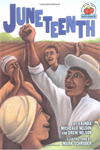 |
Nelson, Vaunda Micheaux and Nelson Drew. Juneteenth (On My Own Holidays). Minneapolis, MN: First Avenue Editions, 2006. |
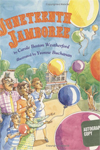 |
Weatherford, Carole Boston. Juneteenth Jamboree. New York, NY: Lee & Low Books, 2007. |
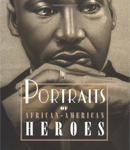 |
Bolden, Tonya. Emancipation Proclamation: Lincoln and the Dawn of Liberty. New York, NY: Abrams Books for Young Readers, 2013. |
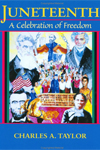 |
Taylor, Charles A. Juneteenth: A Celebration of Freedom. Greensboro, NC: Open Hand Publishing, LLC, 2002. |
XI. Links to Helpful Websites for a Celebration of Emancipation Proclamation Day and Juneteenth
- Juneteenth.com World Wide Celebration. Online location:
http://www.juneteenth.com/ accessed 4 October 2012
- National Juneteenth Holiday Campaign. Online location:
http://www.juneteenth.us/ accessed 4 October 2012
- Texas State Historical Association. Online location:
http://www.tshaonline.org/handbook/online/articles/lkj01 accessed 16 October 2012
XII. Notes for Select Songs
A. Well-known Song(s)
- Lift Every Voice and Sing. Traditional
Location:
Charles, Ray. A Message from the People. New York, NY: Concord, 1972.
- Wade in the Water. By James W. Alexander and Sam Cooke
Location:
The Staple Singers. Freedom Highway. New York, NY: Columbia, 1965.
- Chain Breaker. By Deitrick Haddon
Location:
Chain Breaker. Indianapolis, IN: Tyscot, 1999.
- Victory Is Mine. By Dorothy Norwood and Alvin Darling
Location:
Norwood, Dorothy. Fifty Years: It’s Been Worth It. Jackson, MS: Malaco, 2009.
B. Modern Song(s) (Written between 2005–2012)
- One More Sunny Day. By Donald Lawrence
Location:
Thompson, Lejuene. Gospel’s Best Women. Brentwood, TN: EMI, 2008.
- Freedom Song. By Mandisa, Sam Mizell, and Matthew West
Location:
Mandisa. Freedom. Nashville, TN: Sparrow Records, 2009.
- Fly Like a Bird. By Mariah Carey and James “Big Jim” Wright
Location:
Carey, Mariah. The Emancipation of Mimi. New York, NY: Mercury, 2005.
C. Spiritual(s) and Hymn(s)
- Faith of Our Fathers. By Frederick William Faber. Tune by Henri Frederick Hemy
Location:
African American Heritage Hymnal. Chicago, IL: GIA Publications, 2001. #409
- Freedom Afterwhile. By Michael L. Charles
Location:
Zion Still Sings for Every Generation. Nashville, TN: Abingdon Press, 2007. #107
- He Brought Me Out. By Henry J. Zelly. Tune by Henry L. Gilmour
Location:
African American Heritage Hymnal. #509
D. Liturgical Dance Music
- Freedom. By Eddie James
Location:
Eddie James Presents Ultimate Call: Freedom. Hamilton, AL: Fresh Wine Records, 2008.
- Free. By J. Drew Sheard and Kierra “Kiki” Sheard
Location:
Sheard, Kierra. Free. Brentwood, TN: EMI Gospel, 2011.
E. Song(s) for the Period of Prayer
- I’m Free. By Percy Bady
Location:
Brunson, Milton. Available to You. New York, NY: Word, 1988.
- Dear God. By Smokie Norful
Location:
Once in a Lifetime. Brentwood, TN: EMI Gospel, 2012.
F. Sermonic Selection(s)
- Follow the Drinking Gourd. Traditional
Location:
Marsalis, Wynton. Blood on the Fields. New York, NY: Columbia, 1997.
- Oh Freedom. By Harry Belafonte, Gene Corman, and Milton Okun
Location:
Belafonte, Harry. My Lord What a Mornin’. New York, NY: RCA, 1960.
G. Benediction Song(s)
- Rain on Us. By John P. Kee
Location:
Not Guilty….The Experience. New York, NY: Verity, 2000.
- How Deeply I Need You. By Daryl Evans
Location:
Shekinah Glory Ministry. How Deeply. Harvey, IL: Kingdom Records, 2012.
Note
1. Anonymous. “Never Alone.” African American Heritage Hymnal. Chicago, IL: GIA Publications, 2001. #310



